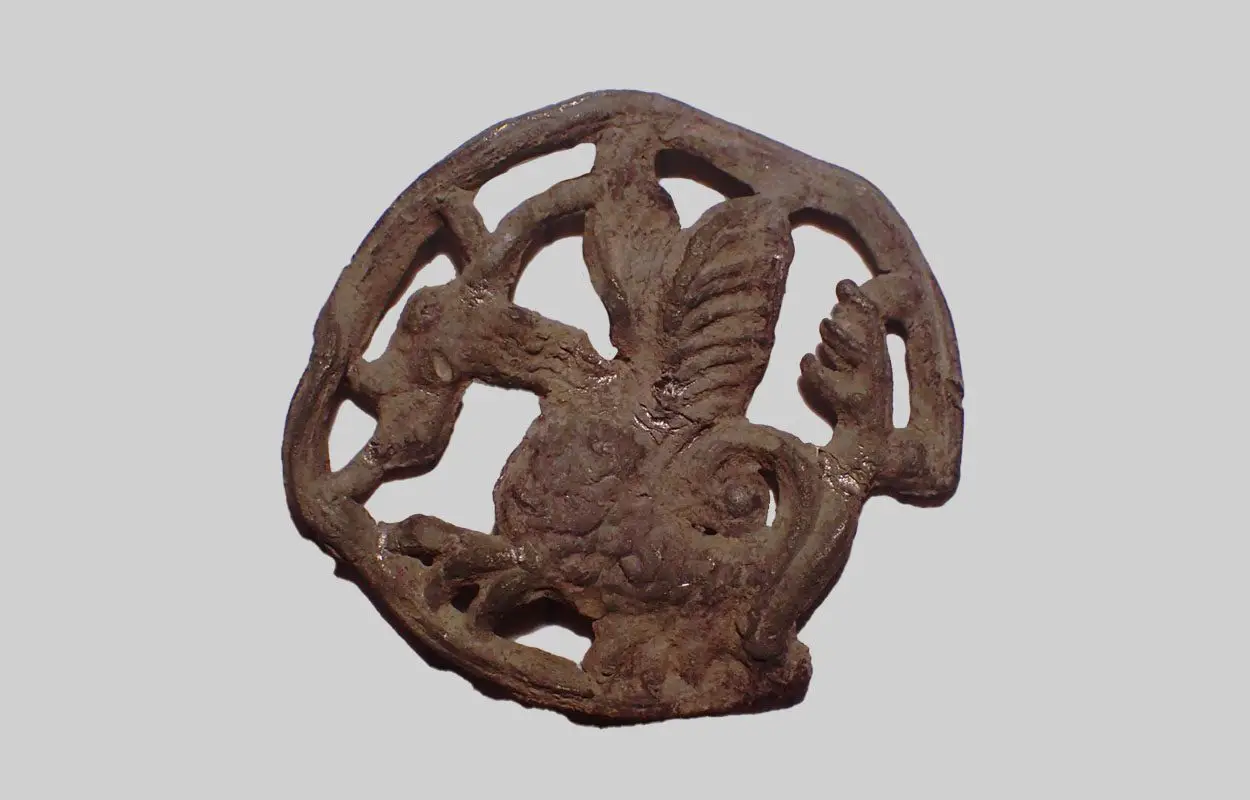A rare medieval pilgrim’s badge depicting a basilisk has been found in the village of Wólka Nieliska, located within Zamość County, Poland.
The pilgrim’s badge, also known as a “pilgrim’s sign”, is an openwork pendant cast from an alloy of lead and tin. It has a depiction of a basilisk, a reptile reputed to be a serpent king.
According to legend, the basilisk is hatched by a cockerel from the egg of a serpent or toad and was reputed to cause death to those who look into its eyes. In medieval depictions they often take on characteristics of cockerels, and in some versions of the myth had the ability to breath fire.
The basilisk appears in the English Revised Version of the Bible in Isaiah 14:29 in the prophet’s exhortation to the Philistines reading, “Rejoice not, O Philistia, all of thee, because the rod that smote thee is broken: for out of the serpent’s root shall come forth a basilisk, and his fruit shall be a fiery flying serpent.”
According to the Lublin Provincial Conservator of Monuments, the pendant has a circular shape with a diameter of 2.8 cm’s. “It represents a ‘basilisk’ dragon enclosed in a circle. Such badges served as a kind of talisman, intended to ensure the wearer’s success in travel and to protect such a person against all kinds of evil, i.e. assault, theft, disease and other random accidents”.
Such finds in Poland are incredibly rare, but they are generally found in Western Europe and date from the early Middle Ages. Pilgrim’s badges can come in all forms of shapes and sizes, depicting images of saints, knights, zoomorphic figurines, as well as human forms and figures.
The oldest examples date from the 11th century and are connected with the Way of St. James, also known as the Camino de Santiago. The Way of St. James is a network of pilgrims’ ways or pilgrimages leading to the shrine of the apostle James in the cathedral of Santiago de Compostela in Galicia in northwestern Spain.
Header Image Credit : Lublin Provincial Conservator of Monuments
Sources : PAP – Medieval pilgrim’s badge found in the Zamość district







